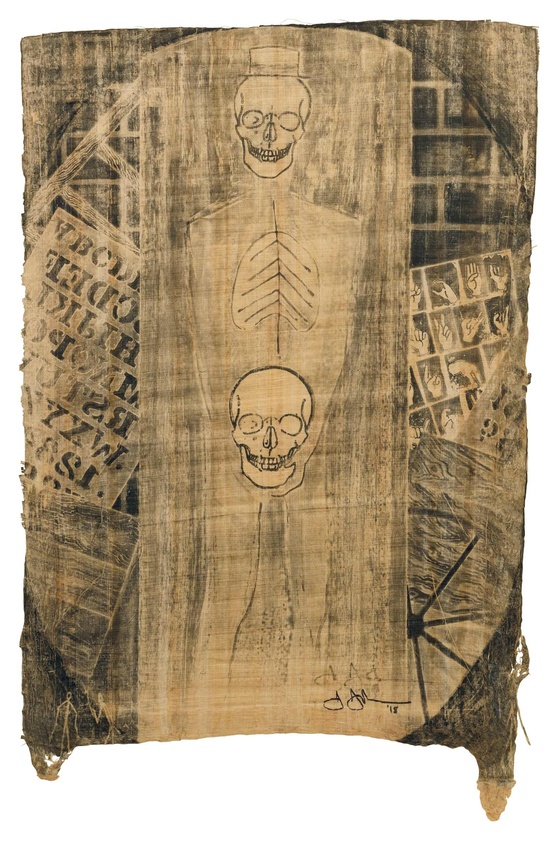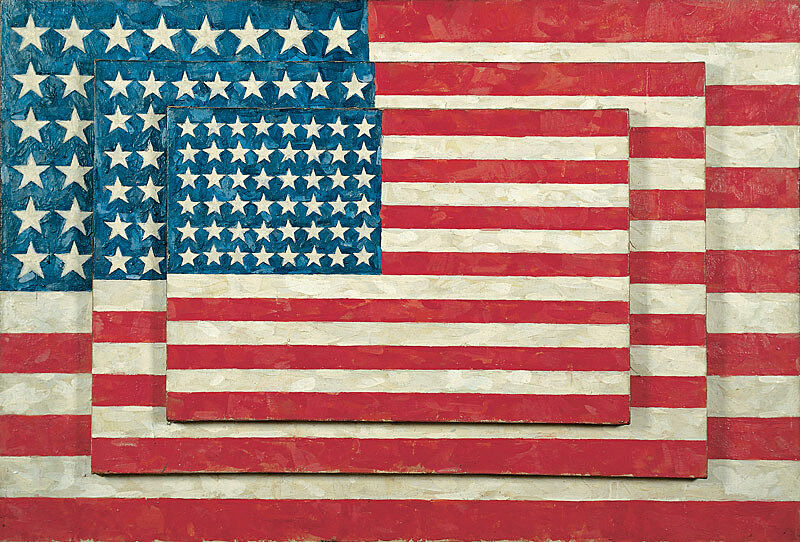Water Freezes
Sept 24, 2021
0:00
Water Freezes
0:00
Drew Sawyer: I’m Drew Sawyer, I’m a curator at the Brooklyn Museum. Water Freezes is part of a series of works that Johns makes beginning in 1961, which are gray monochromatic paintings that introduce language, specifically words—in this case “water freezes”—along with objects. Here we also see a thermometer, which is aligned with the words at the point at which water freezes: thirty-two degrees Fahrenheit. But, unlike Johns’s earlier works, this introduces something that seems to suggest a sort of personal or psychological or emotional meaning.
And so this is the point at which I think many, many critics have pointed out this turn to a potential interior or emotional meaning in Johns’s work. And it happens to coincide with the year that Johns’s relationship with Robert Rauschenberg ends. The two artists met in 1954 and were in a relationship until 1961, so many people have, since these bodies of works were created, read this emotional state as somehow connected to the disintegration of their relationship.
Narrator: Nearby in this gallery, you’ll find a small work called Liar. At first, one might read this as expressing a similarly biting reference to the breakup.
Drew Sawyer: But it’s tricky because Johns and Rauschenberg have never really openly discussed the nature of their relationship.
The work in a post-Stonewall moment is interpreted through the lens of the idea of the closet and that artists pre-1969 operated in the closet through coded language, because it wasn’t possible for them to openly express queer desire, queer love, queer relationships. That those had to be in some ways clandestine symbols and signs.
But I think one of the problems with that interpretation is that, especially in New York City, many of these artists operated in a sphere that was very open and there were very supportive cultures and there were many artists were not queer that openly accepted people who were attracted to the same sex. So I think in some ways that fixes a meaning onto artists that had a much more fluid sense of identity. At the core of so much of Johns’s work is this resistance to fixed narratives and fixed interpretations.


